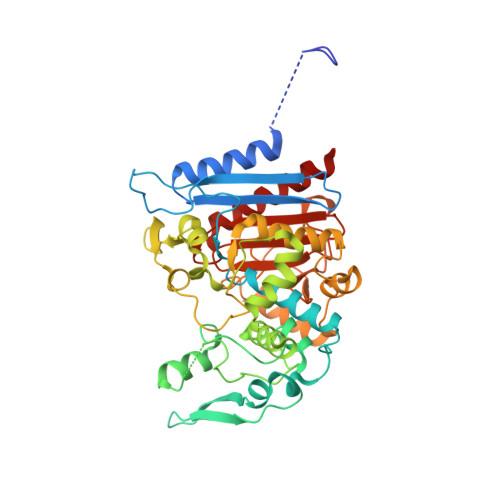The role of distant mutations and allosteric regulation on LovD active site dynamics.
Jimenez-Oses, G., Osuna, S., Gao, X., Sawaya, M.R., Gilson, L., Collier, S.J., Huisman, G.W., Yeates, T.O., Tang, Y., Houk, K.N.(2014) Nat Chem Biol 10: 431-436
- PubMed: 24727900
- DOI: https://doi.org/10.1038/nchembio.1503
- Primary Citation of Related Structures:
4LCL, 4LCM - PubMed Abstract:
Natural enzymes have evolved to perform their cellular functions under complex selective pressures, which often require their catalytic activities to be regulated by other proteins. We contrasted a natural enzyme, LovD, which acts on a protein-bound (LovF) acyl substrate, with a laboratory-generated variant that was transformed by directed evolution to accept instead a small free acyl thioester and no longer requires the acyl carrier protein. The resulting 29-mutant variant is 1,000-fold more efficient in the synthesis of the drug simvastatin than the wild-type LovD. This is to our knowledge the first nonpatent report of the enzyme currently used for the manufacture of simvastatin as well as the intermediate evolved variants. Crystal structures and microsecond-scale molecular dynamics simulations revealed the mechanism by which the laboratory-generated mutations free LovD from dependence on protein-protein interactions. Mutations markedly altered conformational dynamics of the catalytic residues, obviating the need for allosteric modulation by the acyl carrier LovF.
- 1] Department of Chemistry and Biochemistry, University of California-Los Angeles, Los Angeles, California, USA. [2].
Organizational Affiliation:

















